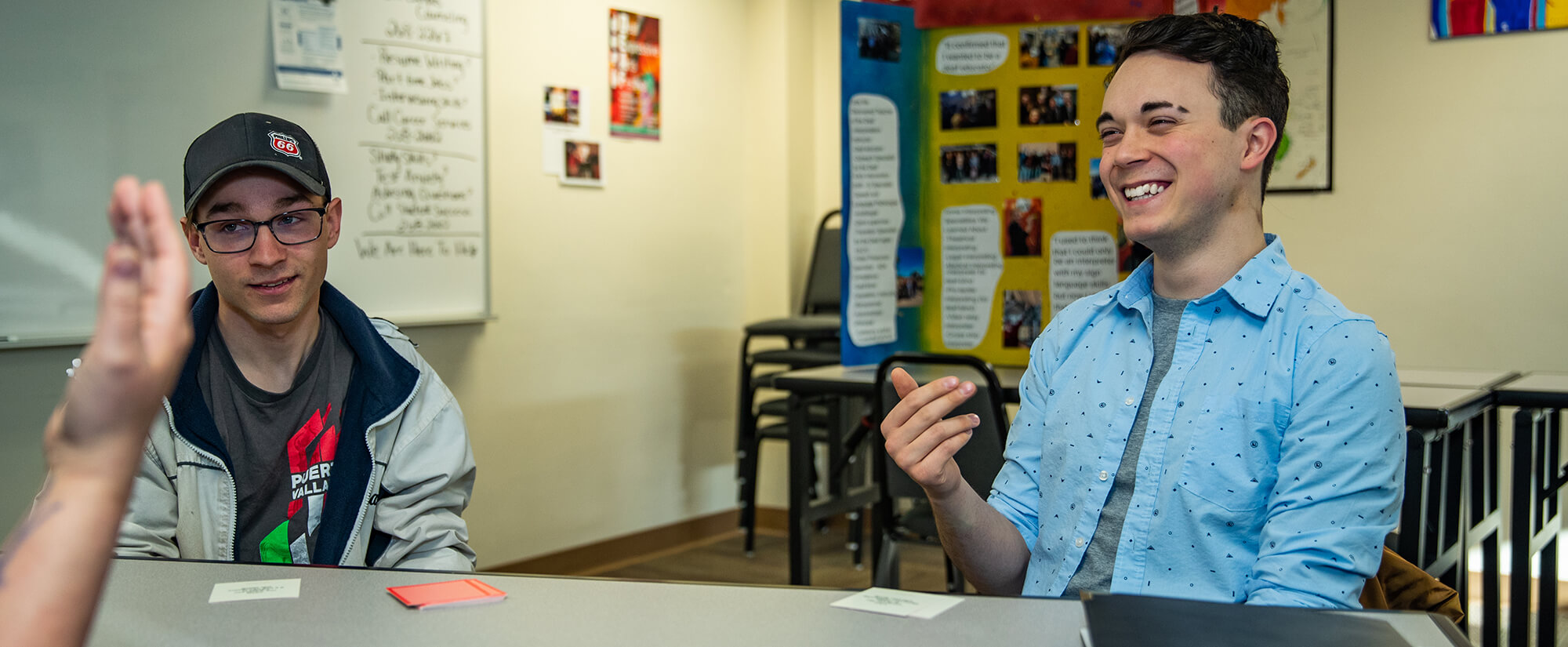
American Sign Language Studies
The American Sign Language Studies degree is designed to provide a foundation for further work with deaf people. Students will develop their knowledge of American Sign Language and the culture of deafness in North America and around the world.
What are the features of Casper’s program?
The study of ASL is on the rise in America. Students learning ASL may use their knowledge of ASL studies to work in careers such as retail, banking, early childhood, wait staff, health care, police, firefighter, or EMT, or may choose to enter a career such as a sign language interpreter, speech language pathologist, psychologist, teacher of the deaf, employment counselor, or audiologist.
Here are just a few ways studying ASL can enhance your life:
- Improve your marketability. ASL literacy gives you an advantage in your career no matter in which industry you work. This skill is also an impressive addition to your resume.
- Meet new people. When you learn American Sign Language you open the doors to communication with an entire group of new people.
- Experience a new culture. With a new language comes appreciation for a new culture. Improve your cultural intelligence by signing up for this ASL degree.
- Boost your cognition. Learning ASL increases your intelligence, cognitive abilities, verbal and spatial awareness, memory, attention span.
Info from asldeafined.com and actfl.org/advocacy/what-the-research-show
Upon completion of the degree program, students will be able to:
- Use ASL in three modes of communication: interpersonal, interpretive, and presentational
- Demonstrate knowledge of diverse cultures and historical perspectives
- Demonstrate a critical awareness of social and cultural norms of deaf culture
- Solve problems using critical thinking and creativity
- Collaborate with classmates on projects and peer reviews in ASL
- Use cutting-edge technology and information to conduct research
“I used to be scared of deaf people. I worried I would not know how to interact with them because they’re “different”. I thought that their lack of a spoken language restricted them. I feared the unknown. After learning what I have about Deaf/deaf people, the Deaf community and Deaf culture, I have gained an understanding and an openness I never knew I was lacking. Through the different social event this semester and the visitors we have had in class, I realized that maybe I was the one who was confined by my lack of language. I have a new and expanded outlook on the importance of communication and the need for a language.” — ASL 1200 American Sign Language I student
“Two of the deaf people in attendance recognized me [at a public social event]… We exchanged pleasantries and even that little bit fueled this new found fire inside me to learn and grow in ASL. I could not be more grateful that I decided to take ASL. It has opened my eyes and brought me into a new world and a new understanding that I may never have had the opportunity to witness before.” — ASL 1220 American Sign Language II student
“The environment feels discussion-based…plenty of hands on activities.” — ASL 1220 American Sign Language II student
“The atmosphere in class was always fun and entertaining.” — ASL 1220 American Sign Language II student
“My favorite thing about ASL is it is one of the easier classes to engage in because I enjoy the activities and find the readings interesting.” — ASL 2200 American Sign Language III student
What are the special admission requirements, if any?
There are no pre-reqs for this program.
What courses would I take?
For requirements and more information about this program, view its listing in the academic catalog:
You may also be interested in…
Other programs related to:
Contact Info
Lisa Johnson
Department Chair; English Instructor
Julia Whyde
Dean, School of Fine Arts and Humanities
Tabitha Siemens
Fine Arts and Humanities Academic Assistant
